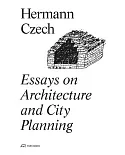Colonial Modernity focuses on the dual topics of the relationship between the post-war aesthetic regime of modernism and the project of modernization in architecture and urban
planning, as well as on the highly charged intertwining of both in the context of colonialism and decolonization. Colonial Modernity is based on the exhibition In the Desert of
Modernity: Colonial Planning and After, which traced these connected histories of modern architecture and urban planning in colonial northern Africa and Europe, and was first exhibited in
2008 at the House of World Cultures in Berlin, Germany. The book reflects contemporary research into architectural modernism and colonialism, and utilizes the thesis of “negotiated modernism”
to initiate new debates on conceptions of modernism&mdashand, inevitably, postmodernism&mdashin an interdisciplinary context.
Colonial Modernity is split into four distinct chapters of academic discourse: “On Colonial Modernity”, “The Colonial Urban Laboratory”, “Travelling Notions, Approaches and Models”,
and “Dialogues Souterrain”. Seminal and significant texts, such as Paul Rabinow’s “Fordism and Colonialism”, Marc Crinson’s “The Colonial Modern and the Smithsons”, and Sven Olov
Wallenstein’s “Biopolitics, Architecture and Colonialism” are included, alongside essays by the book’s editors, and selected interviews with related researchers and artists in the
field.
Through the contributions from academics and specialists in the field, as well as the rich illustrations, Colonial Modernity provides an insightful discourse on the subject of
modernity in architecture and the effect of colonialism.





















